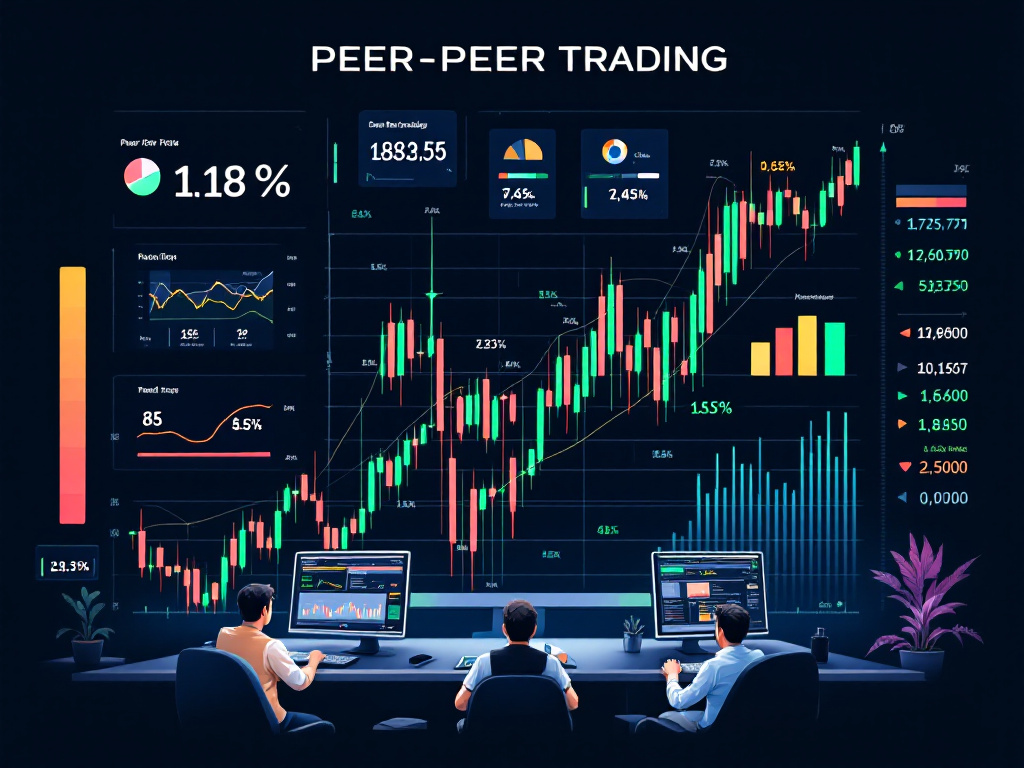Introduction to Automated Backtesting in Prop Trading
In the dynamic world of prop trading, precision and efficiency are the cornerstones of success. Automated backtesting tools give traders the robust framework necessary to simulate trading strategies against historical data and make informed decisions. This guide is tailored for professionals and aspiring traders alike, providing advanced insights on backtesting methodologies, practical tool evaluations, and risk management best practices.
Prop trading environments demand rigor in testing strategies. Whether you are a junior trader, a quantitative analyst, or a risk manager, understanding how to deploy and optimize automated backtesting tools can lead to strategic advantages. In this article, we dive deep into how specific tools such as TradingView, MetaTrader 5, and NinjaTrader empower prop trading professionals to overcome market challenges and harness data-driven decision making.
Optimizing Trading Strategies with Automated Backtesting
Backtesting involves simulating a trading strategy over historical data to gauge performance. With advanced automated tools, you can automate parameter optimization, generate comprehensive reports, and conduct stress testing. A robust backtesting approach mitigates risks such as overfitting, survivorship bias, and look-ahead bias, ultimately improving the predictive power and reliability of trading strategies.
Key Considerations for Advanced Backtesting
For prop trading, several critical aspects must be taken into account when backtesting:
- Data Quality: Ensure high-quality, comprehensive historical data (tick data vs. bar data) is used to reflect real market conditions. Reliable sources help avoid common pitfalls such as data snooping.
- Risk Metrics: Use performance metrics like the Sharpe ratio, profit factor, and maximum drawdown to evaluate strategy robustness. Tracking these metrics assists in fine-tuning strategies under varied market scenarios.
- Walk-Forward Optimization: This advanced technique helps in validating strategy performance by continuously updating parameters based on new data, ensuring that out-of-sample testing is effectively integrated with forward testing.
- Scenario Analysis: Detailed simulations such as stress testing and scenario analysis are essential to gauge the flexibility of strategies when market conditions shift abruptly.
By integrating these elements into your backtesting routine, you can develop strategies that stand strong in volatile environments, thus aligning with regulatory standards such as MiFID II, ESMA regulations, and NFA rules.
Comparative Analysis of Leading Automated Backtesting Tools
When choosing an automated backtesting tool, prop trading professionals must consider several factors. The following table provides an in-depth comparison of leading platforms:
| Tool | Backtesting Features | Data Availability & Quality | Integration Capabilities | Pricing | Use Case |
|---|---|---|---|---|---|
| TradingView | Vectorized backtesting, automated parameter optimization, scenario analysis | Extensive data across multiple asset classes with real-time feeds | API access, broker integration, support for third-party analytics | Free tier available; subscription-based tiers for advanced features | Ideal for both prop traders and individual retail traders |
| MetaTrader 5 | Event-driven backtesting, commission/slippage simulation, robust report generation | High-quality historical data; covers forex, stocks, and futures | Broker integration, API support for algorithmic trading | Free on certain broker platforms; cost-effective for retail and prop use | Suitable for retail traders and scalable for prop firm collaboration |
| NinjaTrader | Advanced backtesting with walk-forward optimization, stress testing | Comprehensive data coverage including tick data | Seamless integration with multiple brokers and custom plugins | Subscription-based with trial versions available | Great for proprietary trading teams requiring deep analytics |
| QuantConnect | Algorithmic backtesting, cloud-based simulation, automated reporting | Extensive global market data across asset classes | API, integration with major brokers and data providers | Free tier available; competitive pricing for professional use | Ideal for firms and individual quants focusing on data science integration |
Implementing Automated Strategies: A Step-by-Step Guide
To effectively use automated backtesting tools, follow these strategic steps:
- Define Objectives: Clarify the trading strategy you wish to backtest, including time frames, risk thresholds, and profit targets.
- Data Sourcing: Ensure you have access to clean, high-frequency market data. Prefer tick data over bar data for higher precision.
- Parameter Optimization: Leverage automated tools to optimize strategy parameters while simultaneously avoiding overfitting by employing out-of-sample testing.
# Sample Python snippet for Backtrader integration import backtrader as bt class TestStrategy(bt.Strategy): def __init__(self): self.sma = bt.indicators.SimpleMovingAverage(self.data.close, period=15) def next(self): if self.data.close[0] > self.sma[0]: self.buy() elif self.data.close[0] < self.sma[0]: self.sell() cerebro = bt.Cerebro() cerebro.addstrategy(TestStrategy) # Add data feeds here cerebro.run() - Scenario Analysis: Run stress tests to examine strategy performance under simulated market shocks.
- Integration with Forward Testing: After backtesting, employ paper trading to verify strategy resilience before live deployment.
Common Pitfalls and Mitigation Strategies
Even the best strategies can be hampered by common pitfalls such as overfitting and survivorship bias. Here are ways to mitigate these risks:
- Overfitting: Use robust out-of-sample testing and walk-forward optimization to validate your strategy.
- Data Bias: Ensure your historical data is comprehensive and adjust for events like corporate actions.
- Look-Ahead Bias: Strictly separate historical data from testing parameters to prevent future data leakage.
- Survivorship Bias: Incorporate delisted assets in your historical analysis to get a realistic market picture.
Risk Management and Real-World Case Studies
Successful prop trading hinges on effective risk management. A major prop firm recently leveraged automated backtesting on TradingView to refine a mean-reversion strategy. By integrating walk-forward optimization and rigorous stress testing, they improved their Sharpe ratio by over 25% while reducing maximum drawdown by 15%. This case study underscores the importance of rigorous backtesting combined with real-time forward testing before scaling live trades.
Pro Tips & Industry Insights
Pro Tip: Always complement backtesting with real-time paper trading. This dual approach verifies data-driven hypotheses and enhances overall strategy resilience. For example, combining automated backtesting with forward testing can reveal subtle issues often unnoticed during simulation.
Industry Insight
As of September 2023, regulators emphasize stringent testing protocols. Prop trading firms must adhere to compliance measures under MiFID II, ESMA, and NFA guidelines. This environment necessitates a systematic and automated approach to backtesting to stay ahead in both strategy development and regulatory requirements.
Actionable Next Steps
To further refine your trading strategies, explore these actionable insights:
- Download our Risk Management Checklist: A comprehensive guide detailing key metrics, stop-loss triggers, and drawdown limits critical for prop trading success.
- Join our upcoming webinar: Learn from experienced traders and quants on integrating backtesting with forward testing and live trading environments.
- Explore additional resources: Read our in-depth article on Advanced Trading Strategies for Prop Trading and benefit from expert insights.
Conclusion
Automated backtesting tools are indispensable for prop trading professionals aiming to streamline strategy development and risk management. By leveraging advanced platforms like TradingView, MetaTrader 5, NinjaTrader, and QuantConnect, traders can navigate the complexities of market data, regulatory compliance, and strategic optimization. Whether you are optimizing a new strategy or refining an existing one, implementing these tools effectively will empower you to achieve measurable improvements in trading performance.
For more tips, check out our Risk Management Checklist for Prop Firms and continue enhancing your trading framework. Embrace automation and robust analytical tools today to pave the way for sustainable trading success.
Remember, consistent innovation and methodical testing are the keys to staying competitive in the prop trading arena.







